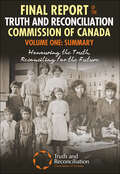Service Alert
Le service CD se termine le 31 juillet 2025
Les livres audio et magazines audio du CAÉB sont disponibles via le service de Téléchargement direct et via fichiers zip téléchargeables. Nous n'envoyons plus de CD par la poste. Contactez-nous pour plus d'informations.
Jour férié provincial le lundi 4 août
À l’occasion du congé civique, le Service aux bibliothèques membres sera fermé le lundi 4 août. Notre ligne d’assistance sera ouverte 9 h à 17 h 00 de l’Est. Les heures d’opération régulières reprendront le mardi 5 août. Nous vous souhaitons un bon congé!


